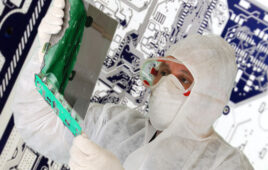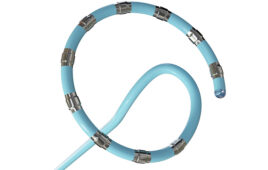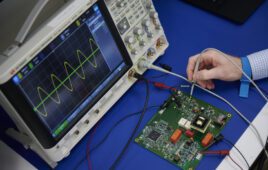 The adoption of microwaves in medical applications for diagnostics and therapy has a long history, but the technology is seeing increased attention because of developments in antenna array technology. However, the phased arrays used in microwave medicine face challenges that require a rethinking of the design to improve the manufacture of devices for therapeutic or diagnostic application. A research paper published in the March 2016 of Proceedings of the IEEE, “On the Design of Phased Arrays for Medical Applications,” examines developing the tools to determine optimal array layout, particularly the number of elements and their positions over a given surface.
The adoption of microwaves in medical applications for diagnostics and therapy has a long history, but the technology is seeing increased attention because of developments in antenna array technology. However, the phased arrays used in microwave medicine face challenges that require a rethinking of the design to improve the manufacture of devices for therapeutic or diagnostic application. A research paper published in the March 2016 of Proceedings of the IEEE, “On the Design of Phased Arrays for Medical Applications,” examines developing the tools to determine optimal array layout, particularly the number of elements and their positions over a given surface.
According to the authors, allocating and properly driving a sufficiently large number of array elements is critical to ensure enough freedom for “shaping” the power deposition in therapeutic uses of arrays. This shaping is needed to properly convey energy as heat into the treated region, while preserving healthy tissue. Likewise, the paper provides guidance on the number and positioning of arrays to achieve optimal image resolution in diagnostic imaging.
Microwave medical applications
Ben Epstein, guest editor of the IEEE issue and a senior adviser to the Defense Advanced Research Project Agency (DARPA) Microsystems Technology Office, says applications for medical have been slow to catch on, although there are “a lot of research papers” on the topic.
In terms of therapy, the most promising use for microwaves is in hyperthermia for cancer treatment. Essentially, by selectively heating cancerous tissue via Joule loss, research shows the treatment can either counteract malignant tumors or increase the effectiveness of radiation and chemotherapy.
In diagnostics, microwave imaging, such as those used in breast exams, rely on the difference in the electrical properties that human tissues show according to their typology and their physiopathological status. It requires the ability to handle a large number of array elements and record the signal gathered at each channel in a systematic way, with the goal of increasing the reliability of the diagnostic result.
Array design insights
Epstein says that although the authors aimed to make the information general and accessible, array design is a difficult topic.
“You can use communication array design techniques for diagnostics, but determining the optimal placement of elements for an array for therapeutic purposes is complex,” he explains.
Epstein notes that the authors are discussing near-field theory, which requires different mathematics than far-field theory used in array science for telecommunications or radar applications. Here is how the paper explains it:
The challenges of such design are fundamentally different from classic array systems for telecommunication and radar. For example, the region of interest (ROI) is located in the near-field zone of the array. This zone and the array are usually embedded in a matching medium, which can be lossy. The ROI is an electrically heterogeneous 3D domain, characterized by high losses, for which the features vary from patient to patient and cannot be predicted. The geometry of the array depends on the anatomy of the body part and must typically be conformal to improve coupling and penetration.
These applications rely on optimal exposure apparatuses. The number, positioning, type, and polarization of the elements of the array are key. As much as possible, designers must reduce the number of antenna, while ensuring they maintain a high level of exposure. Doing so reduces the time and cost of the design. This is one of the most important ideas that the authors of the paper, says Epstein.
“It is a fundamental clarification: There are diminishing returns in terms of the number of array elements.” This discovery, Epstein says, can have a beneficial impact on size, complexity, and cost of a medical microwave array-based system. “They show that there is a limit to adding elements.”
In addition, the paper attempts to address the challenge of patient-specific reconfigurability. Successful array design, the authors note, can be achieved without considering the specific electromagnetic features, therefore, guaranteeing “that patient-specific reconfigurability of the system is actually possible without changing its layout, i.e. exploiting just the array excitations.”
The mathematical tools proposed by the authors address a fundamental design issue of determining position and number of probes to make a system capable of medical applications. Epstein expects that more tools will emerge to engage designers, and the authors say they hope the results will encourage increased use of microwave devices in medical applications.




